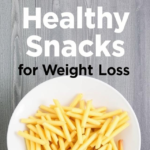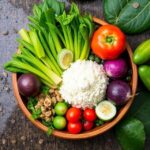Eating healthy can be challenging, especially if you are following a vegetarian diet. Vegetarians avoid eating meat, fish, and poultry, and sometimes other animal products, such as eggs and dairy. This can limit their food choices and make it harder to meet their nutritional needs.
However, with proper planning and variety, a vegetarian diet can provide all the nutrients you need for good health. A vegetarian diet can also offer many benefits, such as lower risk of heart disease, diabetes, obesity, and some cancers (1).
In this blog post, we will show you how to make a veg meal plan for eating healthy, including what foods to eat, what foods to avoid, and a sample menu for one week.
Making a meal plan for eating healthy can be a great way to improve your nutrition, save time and money, and avoid food waste. Here are some steps and tips to help you create your own meal plan:
- Assess your needs and goals: Think about your calorie and nutrient needs, your food preferences, your budget, your cooking skills, and your health conditions. You can use online calculators or apps to estimate your calorie and nutrient needs based on your age, gender, height, weight, activity level, and goals. You can also consult with a healthcare provider or a registered dietitian for more personalized advice.
- Choose a meal planning method: There are different ways to plan your meals, such as weekly, biweekly, monthly, or batch cooking. Choose a method that works best for you and your schedule. You can also use digital tools, such as PlateJoy, to help you create customized meal plans based on your preferences and needs.
- Make a menu: Based on your needs and goals, plan what you will eat for each meal and snack for the chosen period. You can use cookbooks, websites, blogs, or apps for inspiration and recipes. Try to include a variety of foods from all the food groups: fruits, vegetables, grains, protein, and dairy or alternatives. Aim for balance, variety, and moderation in your choices.
- Make a shopping list: Once you have your menu, check what ingredients you already have and what you need to buy. Make a shopping list based on your menu and stick to it when you go to the store. This will help you avoid impulse buying and save money.
- Shop strategically: To save time and money, shop at places that offer the best deals and quality for your budget. You can also compare prices online or use coupons or loyalty programs. Buy fresh produce in season or frozen or canned options when out of season. Stock up on pantry staples that have a long shelf life, such as beans, lentils, rice, pasta, oats, nuts, seeds, spices, oils, vinegars, etc.
- Prep ahead: To make cooking easier and faster during the week, you can prepare some ingredients or dishes ahead of time. For example, you can wash and chop vegetables, cook grains or beans, marinate meats, make sauces or dressings, or assemble salads or sandwiches. You can also cook large batches of soups, stews, casseroles, or other dishes that freeze well and reheat them later.
- Enjoy your meals: Eating healthy should not be boring or stressful. Enjoy your meals with gratitude and mindfulness. Savor the flavors, textures, colors, and aromas of your food. Eat slowly and pay attention to your hunger and fullness cues. Avoid distractions while eating, such as watching TV or scrolling on your phone. Share your meals with family or friends when possible.
What Foods to Eat?
A vegetarian diet should include a diverse mix of fruits, vegetables, grains, healthy fats, and proteins. To replace the protein provided by meat in your diet, include a variety of protein-rich plant foods like whole grains, legumes, tempeh, tofu, and seitan.
You should also eat foods that are rich in iron, calcium, zinc, vitamin B12, and other nutrients that may be lacking in a vegetarian diet. Some of these foods are fortified cereals, breads, plant milks, nutritional yeast, and supplements.
A few healthy foods to eat on a vegetarian diet are:
- Fruits: apples, bananas , berries, oranges, melons, pears, peaches
- Vegetables: leafy greens, asparagus, broccoli, tomatoes, carrots
- Grains: oats , quinoa , brown rice , whole wheat pasta , bread
- Legumes: beans , lentils , chickpeas , peas , soybeans
- Nuts and seeds: almonds , walnuts , pistachios , cashews , sunflower seeds , chia seeds , flax seeds
- Healthy fats: olive oil , avocado , coconut oil , nut butters
- Proteins: tofu , tempeh , seitan , edamame , soy milk , yogurt , cheese
- Spices and herbs: turmeric , ginger , garlic , basil , oregano , cinnamon
- Beverages: water , tea , coffee , plant milks
What Foods to Avoid?
Some foods that you should avoid or limit on a vegetarian diet are:
- Processed foods: chips , cookies , cakes , candy , soda
- Refined grains: white rice , white bread , white pasta
- Added sugars: table sugar , honey , maple syrup
- Unhealthy fats: butter , margarine , lard
- Alcohol: beer , wine , liquor
These foods are high in calories, fat, sugar, and salt and low in nutrients. They can contribute to weight gain, inflammation, and chronic diseases.
Sample Menu
Here is a sample menu for one week of a vegetarian diet. You can adjust the portions and ingredients according to your preferences and needs.
| Day | Breakfast | Lunch | Dinner | Snacks |
| 1 | Oatmeal with berries and nuts | Vegetable soup with whole wheat bread | Tofu stir-fry with brown rice | Carrot sticks with hummus |
| 2 | Scrambled eggs with spinach and cheese | Quinoa salad with chickpeas and veggies | Vegetable curry with naan bread | Greek yogurt with granola |
| 3 | Banana pancakes with peanut butter | Lentil soup with salad | Spaghetti with tomato sauce and cheese | Apple with almond butter |
| 4 | Whole wheat waffles with strawberries | Veggie burger with sweet potato fries | Bean burrito with salsa and guacamole | Trail mix |
| 5 | Greek yogurt parfait with fruit and granola | Vegetable lasagna with salad | Tempeh tacos with corn tortillas and slaw | Popcorn |
| 6 | Smoothie bowl with banana, berries, spinach, soy milk, and chia seeds | Hummus sandwich with lettuce and tomato | Mushroom risotto with roasted asparagus | Dark chocolate |
| 7 | Granola bars with nuts and dried fruits | Tomato soup with grilled cheese sandwich | Seitan roast with mashed potatoes and green beans | Celery sticks with cream cheese |
How to know if the meal plan is balanced?
A balanced meal is one that provides your body with the nutrients it needs to function properly. A balanced meal should include a variety of foods from the three core food groups: carbohydrates, proteins, and vegetables. These foods provide energy, building blocks, and vitamins and minerals for your body.
To know if your meal plan is balanced, you can:
- Follow a healthy eating plan that emphasizes fruits, vegetables, whole grains, lean proteins, and low-fat dairy products, and is low in added sugars, sodium, saturated fats, trans fats, and cholesterol (2).
- Use a portion plate to divide your meal into a quarter proteins, a quarter carbohydrates, and half vegetables (3). This is a guide to give an idea of the proportions of each food group that make up an ideal meal. It does not mean every meal needs to look like this. If some days you eat more or less of a food group, it can still be balanced out over the week.
- Stay within your daily calorie needs and track your food intake with a meal log. You can use online calculators or apps to estimate your calorie and nutrient needs based on your age, gender, height, weight, activity level, and goals. You can also consult with a healthcare provider or a registered dietitian for more personalized advice (4).
- Drink enough water and avoid confusing thirst with hunger. Water is essential for hydration, digestion, circulation, and temperature regulation. Aim for at least 8 cups of water per day, or more if you are active or live in a hot climate.
- Choose healthy snacks that complement your meals and provide nutrients. Snacks can help you curb your appetite and prevent overeating at meals. Some examples of healthy snacks are fruits, nuts, yogurt, cheese, hummus, or granola bars.
A balanced diet is important for your health because it can help prevent chronic diseases, boost your immunity, improve your mood, and enhance your performance. By following these tips, you can make sure your meal plan is balanced and nutritious.
I hope this blog post helps you make a veg meal plan for eating healthy. Remember to eat a variety of foods from all the food groups and enjoy your meals. Bon Appetit! 😊






